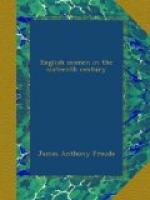The various packets were taken first to Cecil, and were next shown to the Queen. They were then returned to Fitzwilliam, who once more went off with them to Madrid. If the letters produced the expected effect, Cecil calmly observed that divers commodities would ensue. English sailors would be released from the Inquisition and the galleys. The enemy’s intentions would be discovered. If the King of Spain could be induced to do as Fitzwilliam had suggested, and assist in the repairs of the ships at Plymouth, credit would be obtained for a sum of money which could be employed to his own detriment. If Alva attempted the projected invasion, Hawkins might take the ships as if to escort him, and then do some notable exploit in mid-Channel.
You will observe the downright directness of Cecil, Hawkins, and the other parties in the matter. There is no wrapping up their intentions in fine phrases, no parade of justification. They went straight to their point. It was very characteristic of Englishmen in those stern, dangerous times. They looked facts in the face, and did what fact required. All really happened exactly as I have described it: the story is told in letters and documents of the authenticity of which there is not the smallest doubt.
We will follow Fitzwilliam. He arrived at the Spanish Court at the moment when Ridolfi had brought from Rome the Pope’s blessing on the conspiracy. The final touches were being added by the Spanish Council of State. All was hope; all was the credulity of enthusiasm! Mary Stuart’s letter satisfied Philip. The prisoners were dismissed, each with ten dollars in his pocket. An agreement was formally drawn and signed in the Escurial in which Philip gave Hawkins a pardon for his misdemeanours in the West Indies, a patent for a Spanish peerage, and a letter of credit for 40,000_l._ to put the privateers in a condition to do service, and the money was actually paid by Philip’s London agent. Admitted as he now was to full confidence, Fitzwilliam learnt all particulars of the great plot. The story reads like a chapter from Monte Cristo and yet it is literally true.
It ends with a letter which I will read to you, from Hawkins to Cecil:—
’My very good Lord,—It may please your Honour to be advertised that Fitzwilliam is returned from Spain, where his message was acceptably received, both by the King himself, the Duke of Feria, and others of the Privy Council. His despatch and answer were with great expedition and great countenance and favour of the King. The Articles are sent to the Ambassador with orders also for the money to be paid to me by him, for the enterprise to proceed with all diligence. The pretence is that my powers should join with the Duke of Alva’s powers, which he doth secretly provide in Flanders, as well as with powers which will come with the Duke of Medina Celi out of Spain, and to invade this realm and set up the Queen of Scots. They have practised with us for




